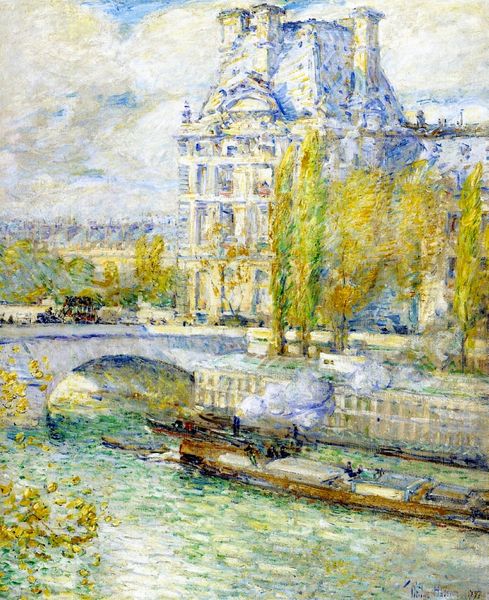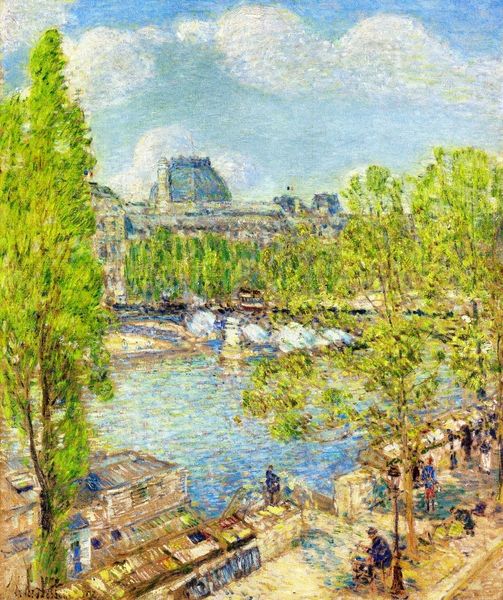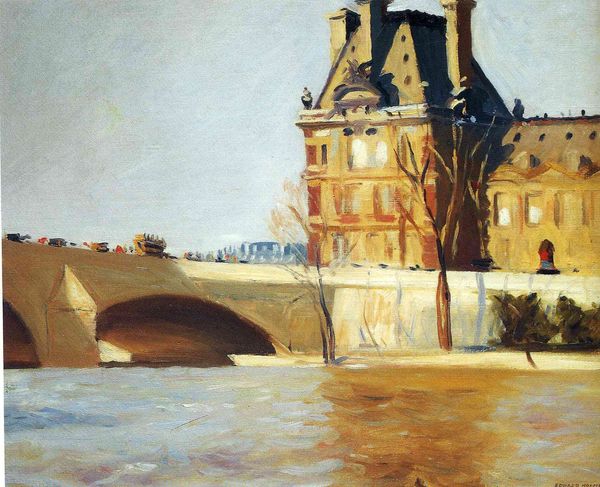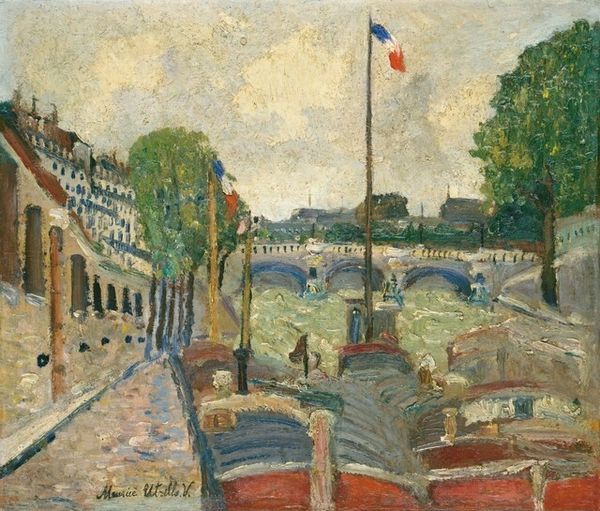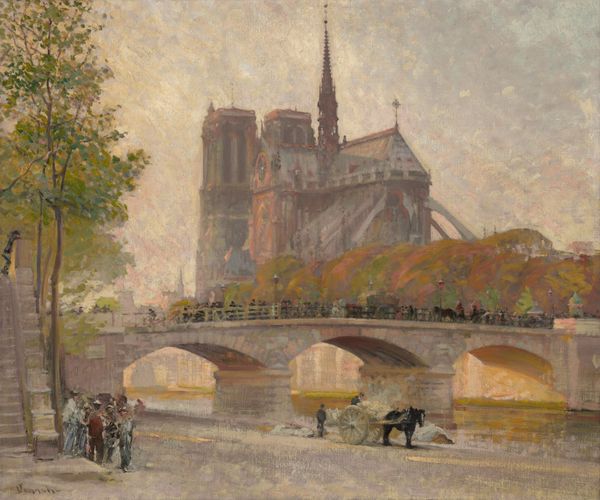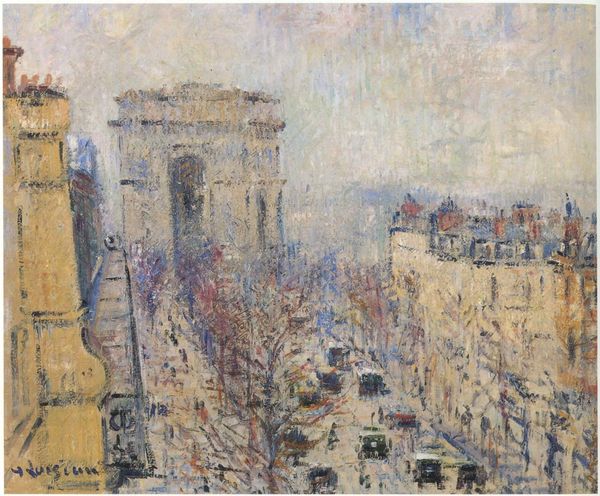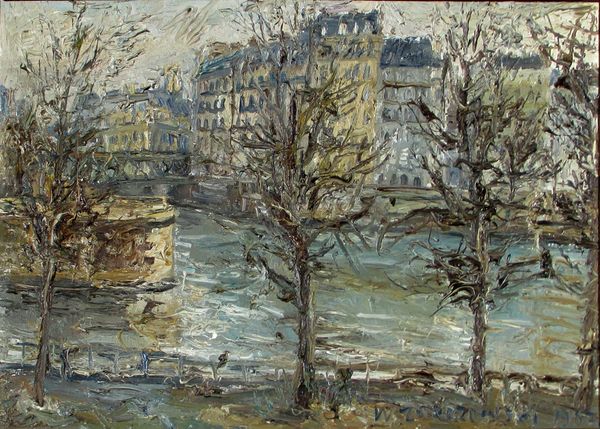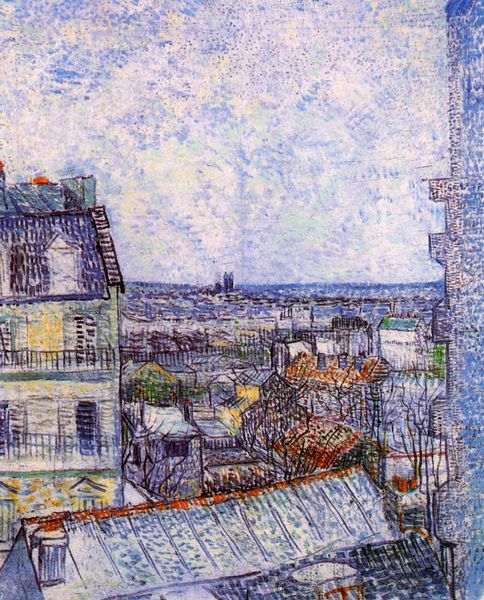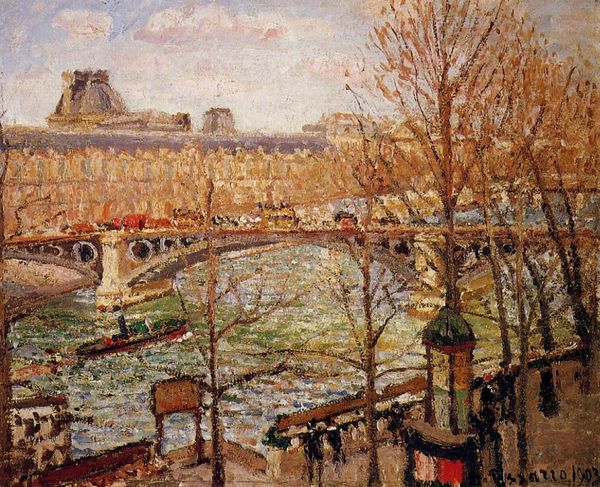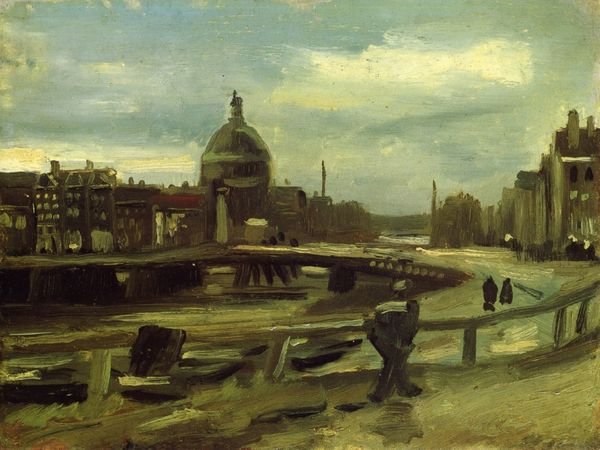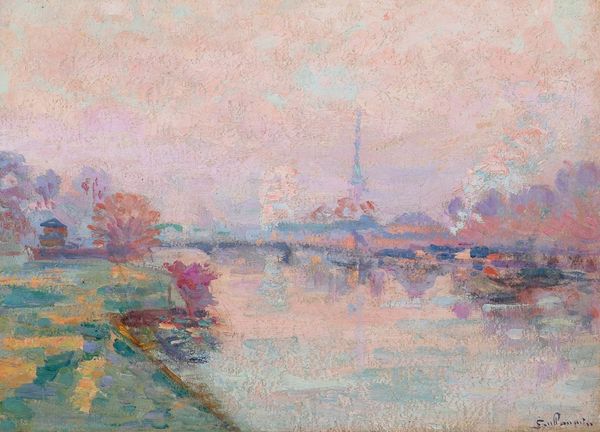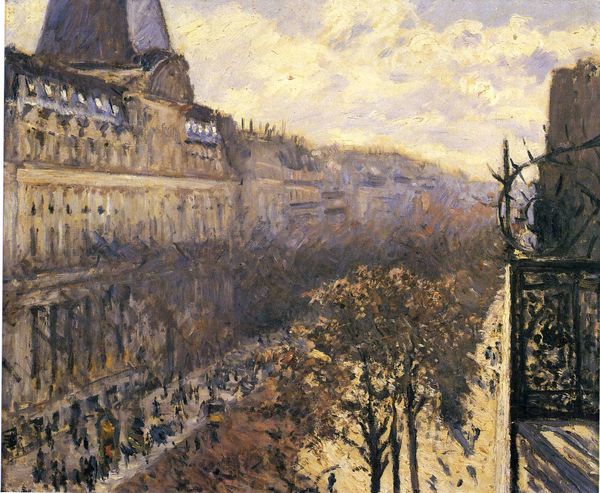
Dimensions: 24.1 x 28 cm
Copyright: Public domain
Curator: Before us hangs Pierre Bonnard’s 1906 painting, "Eiffel Tower and the Seine." Editor: It feels immediately dreamlike, almost faded. The Eiffel Tower is present, but soft. What catches my eye is the visible brushwork and the blending of colors in the water, hinting at a dynamic surface. Curator: Bonnard, deeply immersed in the Post-Impressionist milieu, offered an intensely subjective perspective of modernity. The Tower, an obvious symbol of French industrial prowess, here becomes secondary. Bonnard seemed more invested in depicting personal impressions rather than straightforwardly documenting urban progress, and to underscore his involvement in such personal affairs. How would the role of women in Impressionist’s daily life look today if the Impressionist’s muse had creative and financial agency over their lives? Editor: Exactly. It’s interesting how the materials support that softness too. Oil paint, typically thought of as durable and permanent, is applied so thinly here that it evokes a fleeting moment. Look closely—you can almost feel the labor in each brushstroke. The material processes communicate his individual encounter of modernity and capitalism by showing the material construction of the landmark Curator: And we shouldn't forget the gendered implications of urban space. The Eiffel Tower was initially criticized for its supposed ugliness, an unwelcome phallic intrusion on the Parisian landscape, a space long associated with bourgeois feminine ideals. How did he feel painting this tower, considering that in the French bourgeois society landscape ideals in 1906? Editor: True, it makes you think about the labor involved in maintaining the tower itself and also of all that labour and process to bring art pieces of that time. From mining raw pigments to preparing the canvas, a complex system underpins the supposedly individual artistic experience. Curator: Indeed, the painting then serves as a reminder that individual experiences are fundamentally connected to larger economic and social processes. The interplay of gender and industrialism here, visualized through Bonnard's distinctive gaze, feels very current. Editor: I agree. Seeing how Bonnard has captured that fleeting impression makes me re-think what elements make his artwork distinct.
Comments
No comments
Be the first to comment and join the conversation on the ultimate creative platform.
